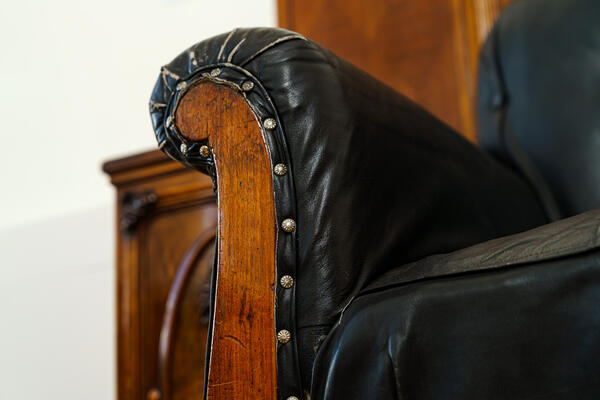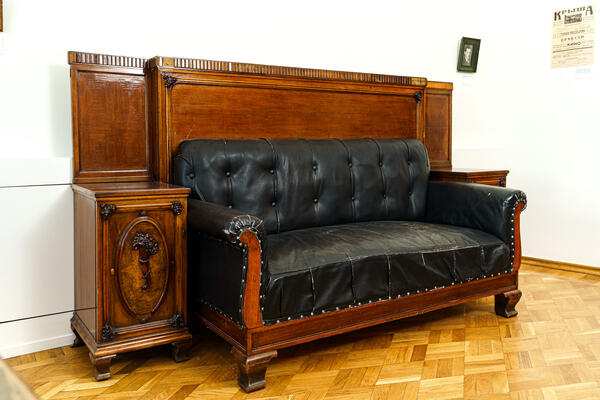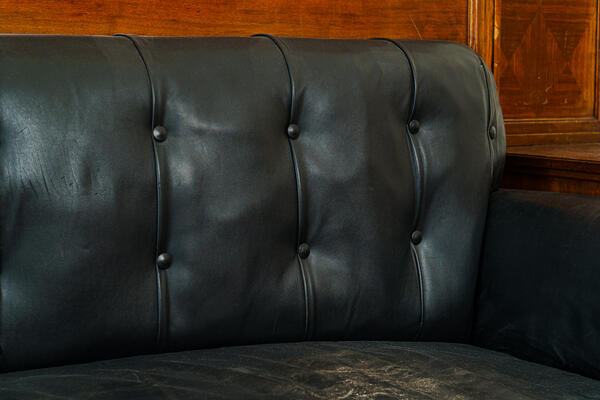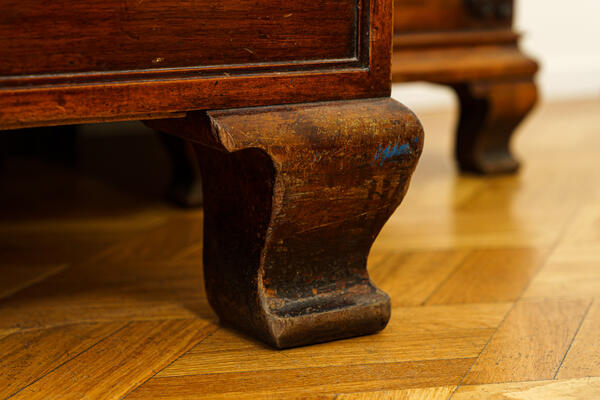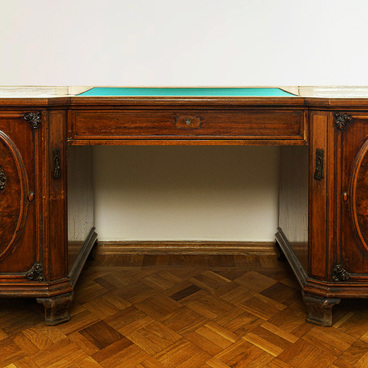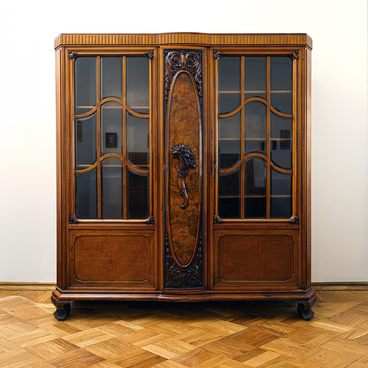The sofa presented in the exhibition is part of the furniture set from the editorial office of the newspaper “Gudok” (“Signal”). It was used in the 1940s. Despite the fact that the sofa appeared in the editorial office later, when Mikhail Afanasyevich Bulgakov no longer worked there, it is associated with the writer’s biography. At the newspaper “Gudok” in the first half of the 1920s, Bulgakov wrote his feuilletons along with Eduard Bagritsky, Ilya Ilf, Boris Pereleshin and other writers.
Sofa from the editorial office of “Gudok”
To dear Mikhail Afanasyevich Bulgakov, with unfailing friendship, the prolific Valyun. May 2 <1>925 Moscow.
Bulgakov inspired the main character of the story “Copper that Triumphed” from this collection.
Not everyone was welcomed in this room. Hacks were greeted with ominous silence, and braggarts and loudmouths — with cold sarcasm.
Bulgakov’s feuilletons were distinguished by their special topicality and sharp satire. Even when writing about the most boring railway topics, he made incredibly funny texts. His only competition in this area was Mikhail Zoshchenko, who at the same time was composing satirical stories for “Gudok’s” magazine “Drezina” in Leningrad.
Despite his success, Mikhail Bulgakov was tired of the feuilletons: they made it difficult for him to work on the novel “The White Guard”. He was forced to write it at night.
Today, for the first time in my career at ‘Gudok’, I had a terrible feeling that I could no longer write feuilletons. I am physically unable. It is gross abuse of me and my physiology.
In the mid-1920s, Mikhail Bulgakov began writing almost exclusively plays and left the editorial office of “Gudok” forever.

